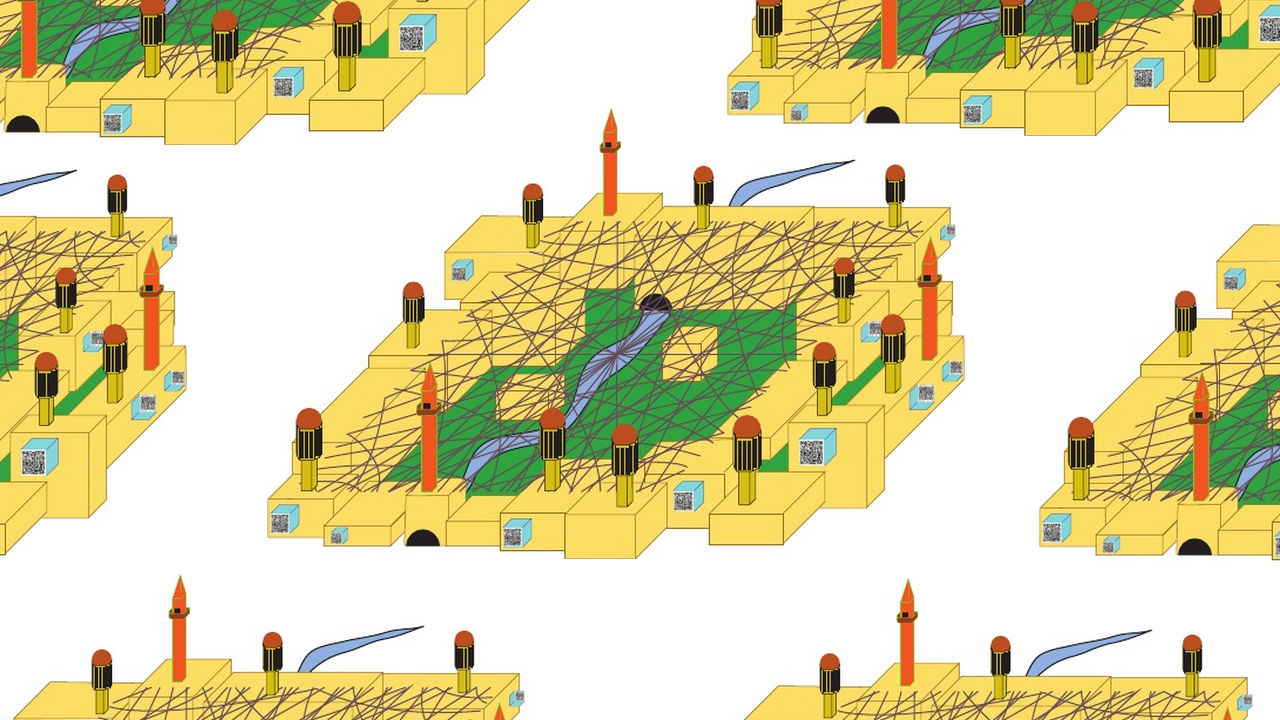That illustration above is law student Asher J. Kohn’s concept of what a fully operational drone-proof city might look like. Rather than building barriers to keep people out and deter weapon strikes like traditional defenses, Kohn’s concept–called Shura City–includes several technologies that obscure people and their movements in order to make them untraceable by UAVs.
Kohn starts with the buildings themselves, which he says “retain elements of randomness” while keeping a sound internal logic, in order to make the streets and structures difficult to navigate from above. For the windows, he envisions multicolored glass that’s easy to see out of but difficult for cameras to peer into and distinguish individual faces. And what of those big, ugly QR codes? They’re explicit warnings to the killing and surveillance machines lurking outside, telling them they’re not welcome in Shura City.
Perhaps most interesting are the concept’s systems for heating and shade. A citywide air conditioning system keeps the whole town at a uniform temperature, making the heat signatures of individual people indistinguishable, and a latticework roof will cast enough shadows to make seeing movement difficult.
As a law student, Kohn is most interested in the hazy legality of drones–and sees architecture as a way to fill in the blanks. “Whensovereign governments do not exclude drones, themachines are privileged with an anarchy in which to roam,” he writes.
“Laws cannot govern anarchy, but architecture can.It is my goal in this project to conceive of ways to use archi-tecture to accomplish the goals that governance cannot.This is both an admission of defeat and a debriefing toexplore what future alternatives exist.”
(Image: Asher J. Kohn)



